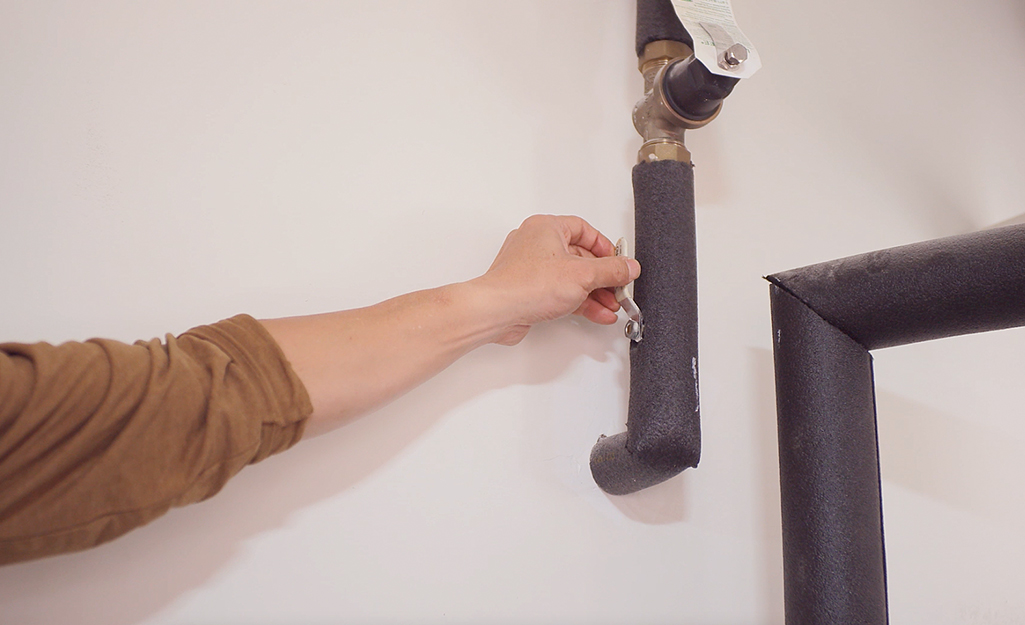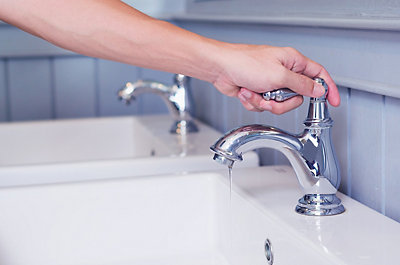Any individual seems to have their own opinion about Why It's Important to Fix Leaky Faucets.

Dripping taps might appear like a small hassle, yet their impact exceeds simply the annoyance of the noise. From drainage to sustaining unneeded financial expenses and wellness dangers, overlooking a dripping faucet can bring about various effects. In this post, we'll explore why it's crucial to resolve this common household issue without delay and efficiently.
Wastage of Water
Ecological Impact
Trickling faucets add significantly to water waste. According to the Epa (EPA), a single tap dripping at one drip per secondly can squander greater than 3,000 gallons of water per year. This not just pressures water resources but additionally affects communities and wild animals based on them.
Financial Costs
Enhanced Water Expenses
Beyond the environmental influence, dripping taps can pump up water costs considerably. The collected waste over time equates into greater utility costs, which might have been stayed clear of with timely repair services.
Potential Residential Or Commercial Property Damage
In addition, prolonged leaking can result in damage to components and surfaces bordering the tap. Water buildup can cause discoloration, rust, and even structural concerns if left neglected, leading to additional repair costs.
Health and wellness Worries
Mold and Mildew Growth
The consistent existence of moisture from a trickling faucet creates an excellent setting for mold and mildew and mildew development. These fungis not just endanger interior air top quality yet likewise pose health risks, especially for individuals with respiratory problems or allergic reactions.
Waterborne Diseases
Stationary water in leaking taps can become a breeding ground for germs and other microorganisms, enhancing the danger of waterborne conditions. Pollutants such as Legionella microorganisms flourish in stationary water, potentially causing serious health problems when consumed or inhaled.
Do it yourself vs. Specialist Repair work
Pros and Cons of DIY Fixing
While some may attempt to take care of a dripping faucet themselves, do it yourself fixings come with their own collection of obstacles. Without proper expertise and tools, DIY efforts can aggravate the issue or result in incomplete fixings, lengthening the problem.
Benefits of Employing an Expert Plumber
Working with a specialist plumber makes sure that the underlying source of the dripping faucet is dealt with successfully. Plumbing professionals have the knowledge and devices to identify and fix tap problems effectively, saving time and decreasing the threat of more damages.
Step-by-Step Overview to Dealing With a Dripping Tap
Devices Called for
Prior to trying to take care of a leaking tap, gather the essential devices, including an adjustable wrench, screwdrivers, replacement parts (such as washers or cartridges), and plumber's tape.
Common Faucet Issues and Their Solutions
Identify the type of tap and the details concern causing the drip. Usual issues consist of damaged washing machines, rusty valve seats, or faulty O-rings. Refer to maker directions or on-line tutorials for detailed support on repair services.
Preventive Measures
Normal Maintenance Tips
To avoid leaking faucets, execute regular maintenance such as cleaning aerators, examining for leaks, and changing worn-out parts promptly. In addition, think about mounting water-saving gadgets or upgrading to more reliable components.
Importance of Prompt Repairs
Dealing with dripping taps as soon as they're noticed protects against additional water wastage and possible damage, inevitably conserving both water and money over time.
Influence On Property Worth
Understanding of Well-Maintained Property
Keeping a building in good condition, including addressing upkeep issues like leaking faucets, improves its perceived value and charm among prospective customers or tenants.
Impact on Resale Worth
Qualities with well-maintained plumbing components, consisting of faucets, command greater resale values in the realty market. Attending to trickling faucets can add to a favorable impression throughout property assessments and negotiations.
Environmental Obligation
Individual Contribution to Preservation
Taking duty for dealing with dripping faucets lines up with more comprehensive efforts toward water preservation and ecological sustainability. Every individual's actions collectively make a substantial impact on protecting valuable resources.
Sustainable Living Practices
By prioritizing punctual repairs and taking on water-saving routines, people contribute to sustainable living methods that profit both existing and future generations.
Verdict
Addressing a dripping faucet exceeds plain ease; it's an important step toward saving water, minimizing economic prices, and guarding wellness and residential or commercial property. Whether via do it yourself repairs or professional support, acting to repair leaking faucets is a small yet impactful way to promote responsible stewardship of resources and contribute to a healthier, more lasting future.
How to Fix a Leaky Faucet: Step-by-Step Repair Guide
A leaky faucet may seem like a simple annoyance, but if it's not fixed promptly, that leak could cost hundreds to potentially thousands. From water damage to mold, mildew, and high water bills, even a tiny leak can be catastrophic if left unattended. Damage like this can even affect the overall value of your home, so it's important to take the right approach for leaky faucet repair. You may need the help of a plumber in some cases, but we've got a few tips you can try on how to fix a leaky faucet before calling the pros.
Four Faucet Types
When you're learning how to fix a leaky faucet, the first step is knowing what kind of faucet you're working with! There are four common types.
Cartridge Faucets
Cartridge faucets come in one- or two-handled varieties. In one-handled cartridge faucets, hot and cold water combines in a single cartridge. In the two-handled versions, hot and cold water are controlled separately and mixed in the faucet.
Ball Faucets
Ball faucets have a single lever you push up and down to adjust the pressure and rotate to change the temperature. A slotted metal ball controls the amount of water allowed into the spout.
Compression Washer Faucets
They're the oldest type of faucet, but they're still used in many homes — especially older ones. Compression faucets have two separate handles that, when turned, raise or lower the washer that seals a water valve. This valve stops water from flowing through the faucet when it is turned off.
Disc Faucets
Disc faucets rarely need to be repaired due to their maintenance-free design. The water flow is controlled by two discs — the upper one raises and lowers against a fixed lower disc, creating a watertight seal. If your disc faucet starts leaking, you may need to replace the seals or clean residue buildup from the inlets.
Fixing a Leaky Faucet
Step 1: Turn Off the Water
Whether you're learning how to fix a leaky bathtub faucet or how to fix a leaky kitchen faucet, always turn off the water supply to your working area when you're fixing a leak. The last thing you want is a flood added to your list of things to fix.
Look for the shutoff valves below your sink or around the tub and turn them clockwise to stop the water flow. If your faucet doesn't have shutoff valves, you may need to turn off the water for the whole house. Check to make sure it's off by turning the faucet on. If nothing comes out, you're ready to start the repair.
Step 2: Take Apart the Faucet
How you disassemble your faucet depends on the type of fixture you have. You can use a flathead screwdriver to remove the caps on top of the handle or handles for cartridge and compression faucets. Inside, you should see handle screws. Unscrew these with a screwdriver to remove the handle.
Disc- and ball-style faucets will typically have an inlet screw near the handle, and removing that will reveal the interior of the faucet.
Detach the Valve Stem
For cartridge- and compression-style faucets, you'll see the inner valve stem or cartridge once you remove the faucet handles. If you have a compression faucet, unscrew the brass valve stem. If you have a cartridge faucet, pull out the cartridge. If your cartridge has been in place for a while, it may require some tools or extra force to remove it due to mineral deposits.
Examine and Replace Parts
Once you've removed the parts, check them out to confirm what needs to be replaced. You may see corroded rubber washers, O-rings, stems, or cartridges. On a ball-style faucet, check the seats and springs for damage.
If you need to repair a leaky disc faucet, check the inlet and seals on the lower disc.
Once you determine what parts must be replaced, visit your local hardware store. Bring the damaged parts with you to ensure you can purchase the correct components to replace them.
Clean Valves and Faucet Cavity
If you've removed a stem or cartridge, you may notice mineral buildup in the faucet's threads. Use white vinegar to clean the valve seat by soaking it for a few minutes, then scrub it away with a soft toothbrush and rinse with warm water. You can also clean the interior of the faucet in the same way.
Reassemble the Faucet
Once your faucet is cleaned and the required parts have been replaced, it's time to reassemble it. Put the pieces back together and slowly turn the water supply back on. Doing this slowly is crucial because too much initial water pressure can damage the new hardware you've just installed.
https://homewarranty.firstam.com/blog/how-to-fix-leaky-faucet

I am just very interested by and I hope you enjoyed the entire article. Be sure to take the time to share this post if you appreciated it. Many thanks for being here. Don't hesitate to come visit our blog back soon.